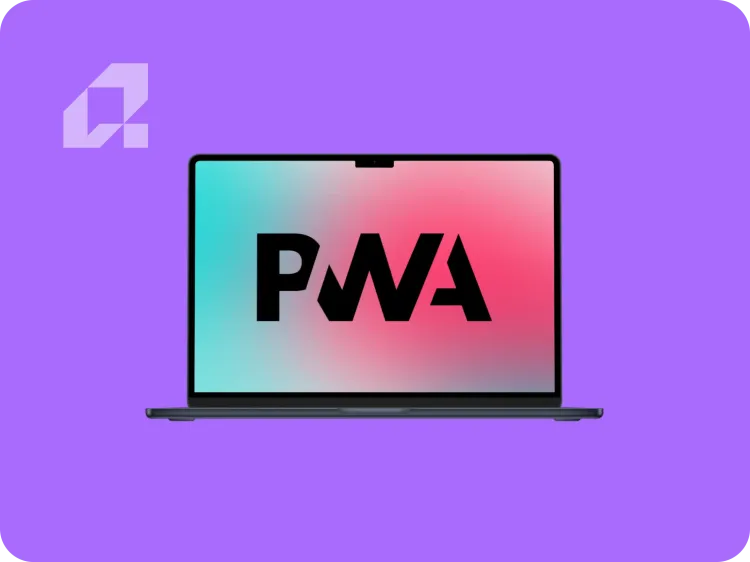5 minutes of reading
9 things to think about during the application design process

Michał Kłak
12 April 2021


If you are not a software developer, building your brand-new, custom web application or upgrading your current one will require you to discuss your project with the project manager or your development team.
IT project design is a complex process that requires you to spend a lot of time making sure that the outcome will be successful. You must conduct market research for apps. Nobody wants to spend their money just to find out that there are tons of similar applications that do the same thing, but better!
You will need to identify the problem your application should target, know how it will solve the issue and what benefit it will bring for your potential customers. Furthermore, there are lots of technical aspects to consider, such as choosing the right technology stack, UX/UI design, project organization and app deployment that should be covered by your IT company of choice, like us! 🙂
Below is a list of the most important things (in our opinion) to keep in mind when designing an app:
Market Research
The real test of whether your customers need your app will only come once it’s built.
However, that doesn't mean it's a complete shot in the dark, and conducting market research is essential. Try to find your potential competitors, analyze their strategies, and examine how they've grown over the past few years. It's easy to find user reviews of apps and determine what they like and what the weak points of your competition are. Prepare a list of the pros and cons of your idea, and try to be as objective as possible. It's also worth spending time thinking about the unique features of your product and how it addresses the shortcomings of the competition. This way, you’ll avoid many mistakes, define your strategy, target audience, and ensure your app stands out.
Talk to Your Customers
Many startups begin working on their product without talking to anyone outside their small circle of employees. User feedback is key—both positive and negative. After all, they are the ones using the app. Try to discuss your idea with as many potential users as possible. Pay attention to what they are looking for and how you can deliver it. A company's CEO will think differently about your app than a manager, yet both may be interested in using it. Try to answer questions like “What does my app offer you?”, “What added value does it provide compared to the competition?”, and “Why would you want to use it?”
Monetization
Wouldn’t it be great if your custom-made app covered its production costs? To achieve this, you need to carefully think about monetization options. The best choice will vary depending on the case. For example, if your app is based on a certain type of service, a monthly subscription model may not be the best option. Take a look at how your competitors make money. There are many models you can use, such as freemium, premium, in-app purchases, subscription models, and also ads and sponsorships. That said, you don't need to limit yourself to just one of these options.
Project specification
At this point I am sure you know what your goals are; you have done the legwork by researching the market, talking to your customers and deciding how you will earn revenue with your app. Now it’s the time to prepare for presenting your idea to the developers.
Your project specification should at least describe the objectives of the project, mockups of your application, its features, user stories, milestones and your budget. This way, your development team can easily dive into your project, prepare an accurate quote for you and estimate how much time will be required to develop your product. It will also be easier with right technology stack selection for a specific case. We love well-written project specifications from our clients!
UX/UI Design
Oftentimes, User Experience and Interface are what make your customers return to your product. Think of Apple – their UX/UI is almost always mentioned in discussions about product design, for a good reason. Users love when products “just work” and are easy to use. On the other hand, it is easy to ruin a great app idea with a poorly designed application that your users will hate. Try to remove all unnecessary features that might overwhelm your customers. The fewer the distractions, the more the user will be focused on the content. There are lots of simple improvements you can include in your UX/UI design best practices – and good designers should tell you about them immediately.
Right technology stack
First, check what kind of app you want to develop – if it will be a mobile app, search for a mobile tech stack like React Native or Swift/Kotlin/Flutter.
If you want to create a web application, check some frontend technologies like React, Vue or Angular and find the right backend programming language like Java, C#, Python or JavaScript (Node.js). Each of these technologies is different and has its own pros and cons.
Let’s imagine that you have an idea for a start-up web application and you want to check if the MVP will cover your business needs. In such a case, Node.js with React.js or Vue.js will be one of the best possible solutions. With this technology stack, you will be able to quickly develop an MVP on a low budget. On the other hand, if you are developing e.g. a huge e-commerce platform, Node.js can be a bad idea as it has heavy computation tasks which can be a problem on a big scale. Nevertheless, you should always choose the right technology stack based on what the project requires. If you already have a team of developers, you need to check what stack they are currently using.
Security
This is a commonly overlooked point of many specifications we see. If your application collects any data, especially sensitive user data, you need to make sure that it cannot be accessed by any third-party. App security measures is of the utmost importance in the context of mobile apps. Many people often keep lots of information on their phone, such as family photos, contact lists, e-mails, or even bank account details and passwords. If your security measures are poorly designed and implemented, you can be sure that they will backfire in the nearest future.
Scalability
Application scalability is defined as the possibility of growth over time. If you aim to release your application to a wider audience, it should be ready to handle a rising number of requests, increase processing power or implement new features. Such “expansion” needs to be planned at the beginning of the development process to prevent it from becoming a hassle later on. Making sure that your application can be developed further is often the duty of your development team. You should discuss scaling your application with them at the beginning of your cooperation.
Marketing strategy
If you planned to start the marketing campaign of your application after its launch, then it’s too late.
If you trust your development team with your app, you should move your focus from supervising the project to creating a marketing strategy for apps as soon as possible. There’s a lot of work to do, and you should start as soon as possible. Branding in today’s world is extremely important – how will your logo, color, name and content stand out from millions of other apps? What marketing channels will you be using? Does your target audience spend most of their time on social media or watching videos? Do they prefer using mobile phones over computers? It would be perfect if you could manage to start your marketing campaign at least several months before you launch your app. This is the most efficient way to assure your app will be used already on deployment day.
Post-Launch Maintenance and Updates
The work doesn't end once an application is launched. On the contrary, it is just the beginning of a continuous process. Post-launch maintenance and updates are crucial for ensuring the application remains relevant, functional, and competitive in a rapidly evolving market.
Post-Launch Marketing
Even after the app has gone live, marketing efforts should not cease. Post-launch marketing plays a pivotal role in sustaining momentum and reaching a broader audience. Research shows that 25% of users abandon an app after just one use, making it vital to keep your app top-notch through marketing campaigns. Utilize email marketing, push notifications, and social media to engage existing users and attract new ones.
Releasing Updates
Regular updates are essential to keep your application running smoothly and to meet evolving user expectations. It not only fixes bugs but also introduces new features and improvements that enhance the user experience. A well-structured update schedule can keep your app fresh and relevant. Additionally, keeping up with security updates is critical to protect user data and maintain trust.
Maintenance
Routine maintenance is vital to ensure the application remains functional and secure. This includes fixing bugs, addressing performance issues, and ensuring compatibility with the latest operating systems. Also, regularly monitoring the app’s performance and implementing automated testing can help in identifying and resolving potential problems before they affect the user experience.
Encourage Customer Engagement and Feedback
Maintaining an open line of communication with your users is essential for post-launch success. Engaging with customers through in-app messages, social media, or email can foster a sense of community and loyalty. Encourage users to provide feedback on their experiences and suggestions for improvements. According to studies, apps that actively seek and respond to user feedback have a 25% higher retention rate than those that don’t.
Innovation and Improvement
The tech landscape evolves quickly, and so do user expectations. Staying ahead of the curve by incorporating the latest trends, technologies, and user experience improvements can give your app a competitive edge. Continuous innovation and improvement ensure that your app doesn’t become obsolete.
What can we do for you?
Web Application Development
Build Lightning-Fast Web Apps with Next.js
AI Development
Leverage AI to create a new competitive advantage.
Process Automation
Use your time more effectively and automate repetitive tasks.
Digital Transformation
Bring your company into the 21st century and increase its efficiency.


How to choose colors for your UI Project? Colors in IT
Learn how to select the best colors for your UI, using color psychology and design principles to enhance user experience and increase engagement.
minutes of reading

Kornelia Bekasiak
14 November 2024

PWA vs Cross-Platform Apps: When to Choose a PWA
Learn when to choose a Progressive Web App (PWA) over a cross-platform mobile app, based on cost, performance, and business needs.
11 minutes of reading

Oskar Szymkowiak
04 October 2022

Why Focus on Self-Service Design in SaaS Applications?
Learn how self-service design in SaaS apps improves user experience, reduces costs, and drives business efficiency with automated onboarding and 24/7 access.
7 minutes of reading

Oskar Szymkowiak
14 July 2022